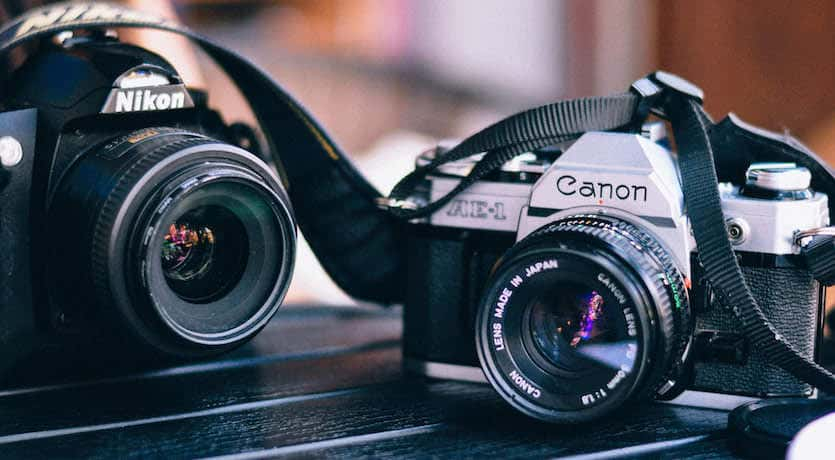Narrative feature films and high end commercials typically use only one camera, along with most dramatic scripted TV shows, so why would a corporate video need multiple cameras? The simple answer is that many corporate videos, especially event videos, are more similar in nature to reality TV, which often uses many cameras, even dozens of cameras, to capture all of the action. Though the vast majority of our shoots only have one camera, we have frequently used two for interview purposes and occasionally relied upon several shooters at events as well. Hollywood feature films, except for during action sequences, often avoid using more than one camera because the lighting is specifically set up for a single camera at a designated location. With corporate interviews, though, the subject isn’t moving and the lighting can work perfectly fine from two different angles if arranged carefully.
One of the key benefits of filming an interview with two cameras is the ability to cut in and out of different takes more readily without cutting to B-roll. If you have a single camera interview and the interviewee flubs a line half-way into the take, you either have to use an entirely different take, or cut to a B-roll shot, then back into the second half of a correct take. With multiple camera angles, you can cut out of the take from Camera A and into a better take from Camera B flawlessly. The ability to zip around in editing makes for smoother interviews in many cases, especially when the B-roll is limited or when the client wants more focus on the interview itself.
Another great benefit of shooting interviews with two cameras is being able to add some visual interest to the interview itself, without relying purely on added graphics, B-roll, and stock footage. Most news programs shoot from several angles, so viewers are already accustomed to thinking of multi-camera shoots as normal for interviews and “high end” from a production value standpoint. From a pure safety level, having two cameras also protects against a situation where a media card runs out mid-shot or where a battery dies during the middle of the take. While any skilled and professional videographer should switch out a battery that’s low, I’ve had many times where one of my batteries registered as half full, then without notice simply failed to work. I feel awful for having to cut off the interviewee and tell them I need to make a battery change, especially if they are doing a great job, but such is the reality of technology sometimes.
Besides interviews, several cameras can also be useful for event shoots that only happen once and depend upon capturing the moment. Hiring a second videographer and B-camera for event videography is not typically hugely expensive because your key shooter should be the highest crew expense. Filming additional footage as a second shooter at an event is one of the easier tasks imaginable. Without needing to worry about lighting gear or even audio (when only B-roll is required), the only true skill the shooter needs is a good eye for the action and perhaps the right camera support gear (a solid tripod, shoulder mount, fig rig, or some type of stabilizer to gather smooth shots). Yet at the same time, the B-camera can often grab great moments that A-camera misses, plus the ability to have both shooters filming different events at the same time during a trade show, for instance.
There are several concerns to keep in mind with two camera shoots from a production standpoint, though. While the second camera man need not be the most senior professional, familiarity with the camera equipment is essential. On several occasions, I have had a junior crew member use one of my extra cameras on shoots where the client didn’t pay for a second camera, just to try to add a bit of extra value for them, and the results are usually poor. A past editor freaked out temporarily when he told me that “almost all” of the shots out of one media card were blown out and unusable, until I told him that was just the backup camera and none of the footage was anything I needed or was relying upon to use. I learned my lesson that unless I specifically bring aboard a second videographer, I can’t trust a junior crew member to obtain even decent footage. Another concern is making sure that both cameras match for editing purposes. Don’t use two cameras with drastically different qualities or the final edit will suffer greatly.

